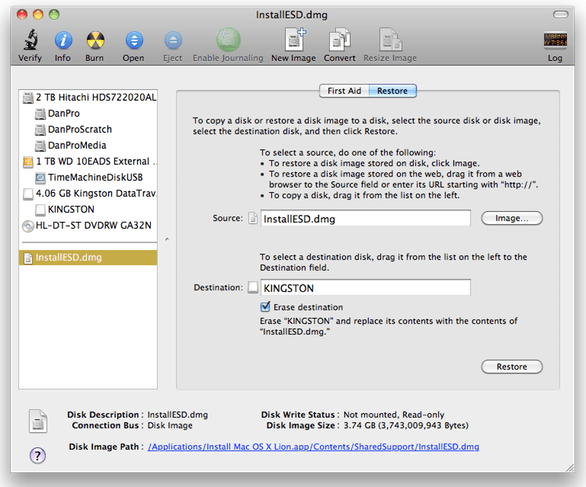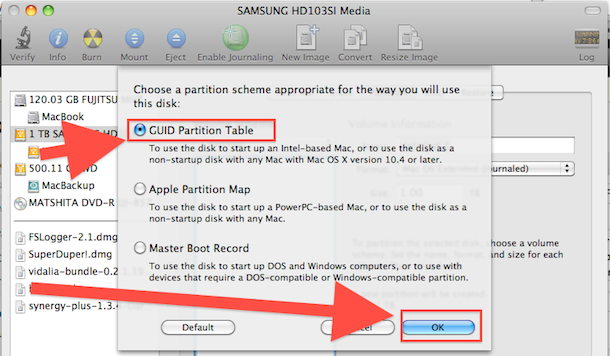

- #How to install mac os x dmg on new hard drive password#
- #How to install mac os x dmg on new hard drive download#
But as I explained when Lion debuted, there are still good reasons to have a bootable installer disc or drive. It’s a convenient feature that, in theory, means you no longer have to carry a Mac OS X Install disc or a bootable external hard drive. (See our hands-on with Lion Recovery for all the details.) If you ever have system or drive issues, Lion Recovery lets you boot your Mac into a special recovery mode to check or repair your hard drive, browse the Web for troubleshooting help, restore your drive from a backup, or even reinstall Lion itself. You can now quit Terminal and eject the volume.One of the premier troubleshooting features of Lion (Mac OS X 10.7) is Lion Recovery.

Terminal shows the progress as the volume is erased.


Terminal doesn't show any characters as you type your password.
#How to install mac os x dmg on new hard drive password#
When prompted, type your administrator password and press Return again.* If your Mac is using macOS Sierra or earlier, include the -applicationpath argument and installer path, similar to the way this is done in the command for El Capitan. Sudo /Applications/Install\ OS\ X\ El\ Capitan.app/Contents/Resources/createinstallmedia -volume /Volumes/ MyVolume -applicationpath /Applications/Install\ OS\ X\ El\ Capitan.app Sudo /Applications/Install\ macOS\ High\ Sierra.app/Contents/Resources/createinstallmedia -volume /Volumes/ MyVolume Sudo /Applications/Install\ macOS\ Mojave.app/Contents/Resources/createinstallmedia -volume /Volumes/ MyVolume Sudo /Applications/Install\ macOS\ Catalina.app/Contents/Resources/createinstallmedia -volume /Volumes/ MyVolume Sudo /Applications/Install\ macOS\ Big\ Sur.app/Contents/Resources/createinstallmedia -volume /Volumes/ MyVolume Sudo /Applications/Install\ macOS\ Monterey.app/Contents/Resources/createinstallmedia -volume /Volumes/ MyVolume If it has a different name, replace MyVolume in these commands with the name of your volume. These assume that the installer is in your Applications folder, and MyVolume is the name of the USB flash drive or other volume you're using. Type or paste one of the following commands in Terminal.Open Terminal, which is in the Utilities folder of your Applications folder.Connect the USB flash drive or other volume that you're using for the bootable installer.You will create the bootable installer from this app, not from the disk image or. It installs an app named Install OS X El Capitan into your Applications folder. Inside the disk image is an installer named InstallMacOSX.pkg.
#How to install mac os x dmg on new hard drive download#


 0 kommentar(er)
0 kommentar(er)
